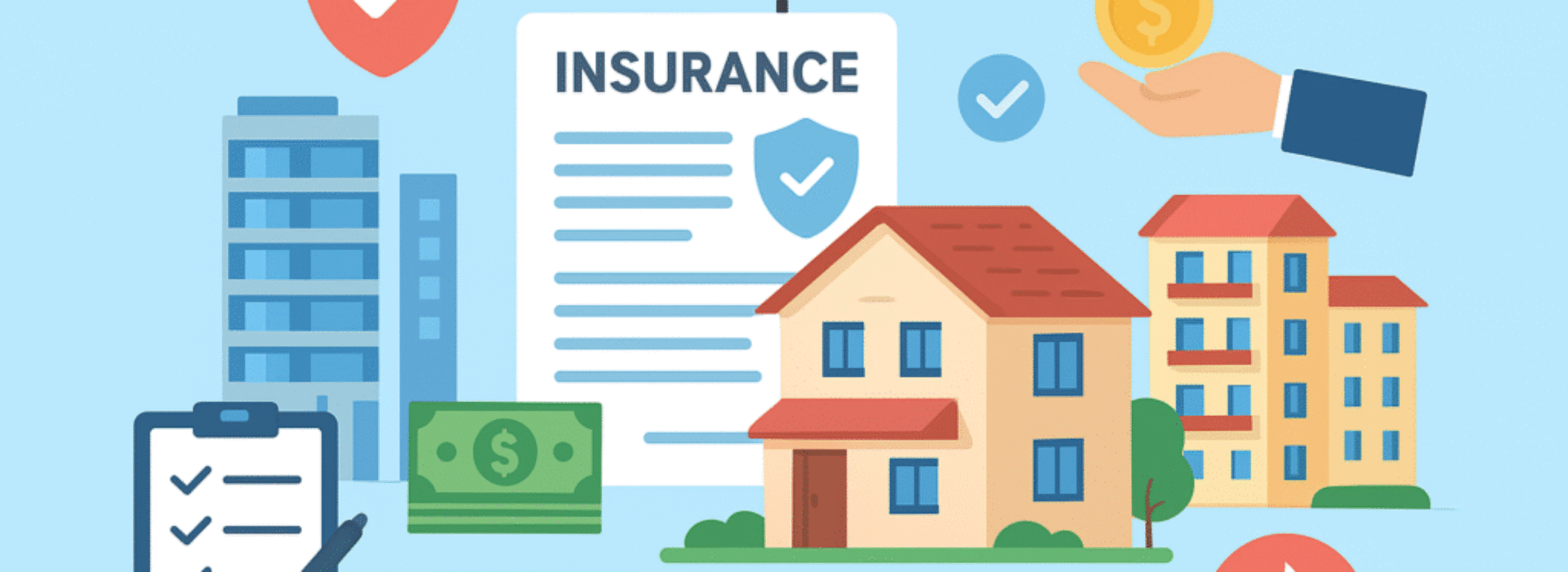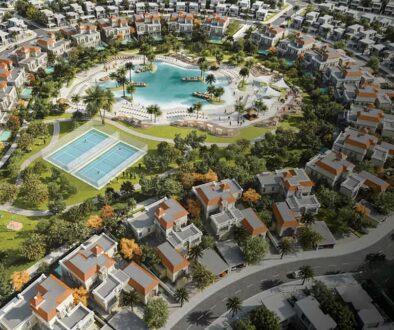Understanding Property Insurance in Dubai: Types, Costs & Benefits Explained
What Is Property Insurance in Dubai?
Whether you call it home insurance, house insurance, or homeowners’ insurance, all refer to one key idea — a policy that protects you financially if your property or belongings are damaged, stolen, or involved in an accident.
A standard property insurance plan typically covers two main components:
- The structure – including walls, ceilings, fixtures, and in many cases, plumbing.
- The contents – such as furniture, appliances, clothing, and valuables.
Many plans also include liability coverage, which protects you if someone is injured on your property.
Example: Imagine your washing machine leaks and floods the apartment below. Without insurance, you’d be paying for both repairs yourself. With coverage, that worry disappears.
Types of Property Insurance in Dubai
Every home and homeowner is different — and so are their insurance needs. That’s why insurers divide property coverage into categories.
Picture this: a landscaped villa, a glass-walled Downtown apartment, and a landlord with three rental units in JVC. Each faces unique risks and needs distinct protection.
1. Building Insurance
This type protects the physical structure of your home — the walls, roof, fixtures, doors, and windows. If fire damages your kitchen, this policy typically covers the rebuilding cost. 💡 Tip: Banks often require building insurance before approving a mortgage.
2. Contents Insurance
Everything that makes your home feel personal — your TV, sofa, electronics, and decor — falls under contents insurance. It’s especially vital for tenants, who don’t own the building but still need protection for what’s inside it.
3. Landlord Insurance
Ideal for property investors, landlord insurance covers damages caused by tenants, protects lost rental income if the unit becomes uninhabitable, and often includes liability cover for rental-related incidents.
4. Apartment Insurance
Designed for unit owners, this policy covers the interior structure and personal belongings. Shared areas such as lifts or corridors are usually insured by the building management.
5. Additional Living Expenses Coverage
If a fire or flood makes your home temporarily unlivable, this coverage pays for alternate accommodation—such as a serviced apartment—until repairs are completed.
6. Liability Protection
Accidents happen unexpectedly. If a visitor slips or debris from your balcony damages a neighbor’s car, liability insurance covers medical or legal expenses.
Benefits of Property Insurance in Dubai
Insurance often sits unnoticed—until the moment it truly matters. Here’s why it’s worth having:
- Protection against natural events like floods, sandstorms, and tremors.
- Financial security in case of fire, theft, or vandalism.
- Coverage for accidents such as burst pipes or electrical issues.
- Mortgage approval support, as many lenders require proof of building insurance.
- Peace of mind knowing your home and belongings are protected.
Think of it like car insurance—you hope never to need it, but you’ll be thankful it’s there when trouble strikes.
Cost of Property Insurance in Dubai (2025)
“How much does it cost?” — the most common question. The answer: it depends, but here’s a general guide.
- Policies typically cost 0.1%–0.5% of the property’s value per year.
- Building insurance starts around 0.1% of the rebuild value.
- Contents insurance averages 0.5% of your belongings’ value.
👉 Example: A studio in Business Bay may cost under AED 1,000 yearly, while a Palm Jumeirah villa could reach several thousand dirhams.
Factors That Influence Insurance Costs
Your premium depends on several factors:
- Property age – older homes often attract higher premiums.
- Location – coastal or low-lying areas may cost more to insure.
- Rebuild value – larger or complex villas are pricier.
- Coverage type – extra protection (like floods or earthquakes) adds cost.
- Claim history – previous claims can raise premiums.
- Security features – CCTV, alarms, and sprinklers may lower them.
Documents Required for Property Insurance
To get insured quickly, prepare these documents in advance:
- Emirates ID or passport
- Title deed, Ejari, or sales contract
- Property valuation or rebuild estimate
- Floor plan or layout
- Photos of the property
- Security system proof
- Inventory of belongings with values
- Lease agreement (for landlords)
Incomplete paperwork can delay the underwriting process.
Choosing the Right Property Insurance in Dubai
Don’t just pick the cheapest policy—choose one that fits your risk profile.
Ask yourself:
- What am I most worried about—fire, theft, flooding?
- Do I need to protect valuables like jewelry or art?
- Am I a homeowner or a tenant?
Then:
- Compare providers and look beyond price—review coverage limits.
- Check exclusions (floods or earthquakes may not be standard).
- Match coverage to lifestyle—families may need broader protection.
- Research claim reputation—speed matters during crises.
- Add optional extras if needed, like jewelry or antique coverage.
How to Apply for Property Insurance
The application process is simple when broken down:
- Request quotes from multiple insurers.
- Compare cover limits, not just premiums.
- Select the suitable policy.
- Submit required documents.
- Underwriting review (sometimes with a property inspection).
- Pay the premium.
- Receive your insurance certificate.
- Renew yearly to keep coverage aligned with any changes to your home.
Common Myths About Property Insurance
Let’s debunk a few misconceptions:
- “Older homes are cheaper to insure.” ❌ They’re usually more expensive.
- “All belongings are automatically covered.” ❌ Most policies have item limits.
- “Natural disasters are included.” ❌ Often an optional add-on.
- “Only owners need coverage.” ❌ Tenants can protect contents too.
- “One policy lasts forever.” ❌ Values change; policies must evolve.




